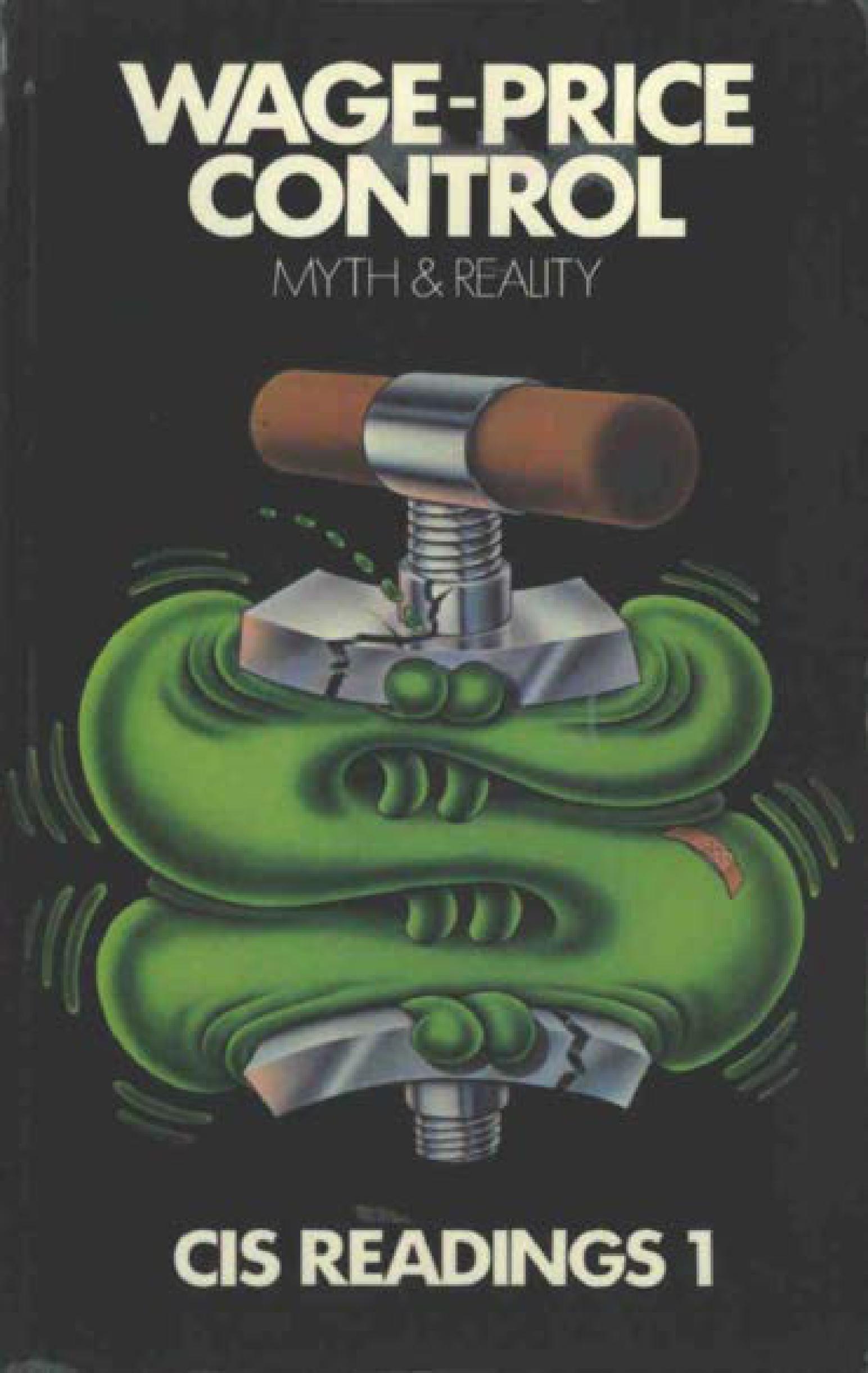Wage-Price Control: Myth and Reality
Home » Publications » Wage-Price Control: Myth and Reality
The Centre for Independent Studies was set up with the object of providing a stream of readable commentaries on economic and social issues presented by independent authors. These commentaries will elucidate principles, not grind particular axes. In their analyses, the authors will emphasize the microlevel actions of individuals, and the further unintended consequences of these actions.
This first publication is offered as a contribution to the public debate on wage and price controls. These controls have been with mankind for well nigh 5,000 years. How is it possible to account for their recurrent popularity, with politicians, officials and the public?
The activities of businessmen (and trade unions) arc visible and patent to all. Businessmen give orders, and these orders are followed by their subordinates. What, then, could be simpler than to order businessmen, in their turn, to follow certain quantitative regulations?
What is far less visible and obvious is that each firm’s activities are only part of one small link in a vast chain of interlinked activities. The actions of a large number of separate and separated firms (and individuals) contribute to the completion of any one product – from cars and tractors to pins and pencils. (Consider the origins and provenance of the thousands of items that go into a finished car — from windscreen to windshield wipers, from differential to seat covets, from tyres to screws and nuts and bolts. And then consider the origins and provenance of the steel, glass, rubber, plastic . . . etc. required to make these items. And then take into account the iron ore and coal, the ships and insurance . . .)
Only a minute fraction of this enormous inter-related chain is visible to us in our daily activities. And inside each business, of course, order is the result of orders, from superiors to subordinates. But this cannot be so of the entire chain of production linking all these companies together. The various firms and productive units, the different individuals and partnerships,
all scattered over wide geographical distances, that co-operate together, in effect, to produce even a humble pencil, cannot all even know of one another.
All these activities have to be co-ordinated by some other method than the giving of orders. They can be (and are) co-ordinated by means of price signals. These signals are needed to convey vital information – about what and how much to produce, where and when.
To understand economic phenomena, then, we have to view the world in terms of such chains of production – chains that include large numbers of companies and encompass innumerable production units. Individual companies (and trade unions) are then merely the most visible and obvious aspects of this vast invisible chain. Prices and wage rates can then be seen as similar to readings on gauges — visible indicators of an invisible and extraordinarily complex interconnected series of actions.
Price and wage controls are based on the assumption that prices and wages are determined entirely by individual companies and trade unions – prices and wages stand at certain levels solely because companies and unions so decide.
In terms of what has been said above, this is rather like assuming that the readings on the dials and gauges of highly complicated machines are more or less arbitrarily determined by the engineers involved. To “fix ” the gauges so they perpetually point to the same set of readings does not do away with the intricate and extremely complex processes going on invisibly behind these visible dials. But these processes are now forced to manifest themselves in other ways – in the shape of mysterious “breakdowns” or “malfunctions” of this very complicated machinery.
The case studies in this book examine a number of instances, drawn from a wide variety of contexts, in which the problem of rising prices was tackled by ordering that prices should remain at certain specified levels or rise by only certain specified percentages. These price and wage-control policies were established on the assumption that businessmen and unions are directly responsible for price and wage increases.
In many cases, administrative controls were supported by joint agreements with companies and unions not to raise prices, or to raise them by certain limited amounts. The record, however, shows that such policies and agreements failed to stop infiation: wages and prices continued to rise at faster rates than those aimed at.
It seems clear that there are other infiucnces at work: in tackling companies and unions, governments fail to reach the fundamental cause of infiation. Prices do not rise because no-one had thought of ordering them to stop; nor do they rise because no-one had set official target rates for infiation.
Wage and price controls, however, have had other, unintended consequences. They have inhibited those relative price movements that convey vital empirical information. This dis-co-ordination has produced its own symptoms: labour shortages, difficulties in obtaining supplies, quality reductions. The influences that would have otherwise appeared as rising prices have taken on other shapes: wage drift, periodic re-classification of employees, charges made for services formerly rendered free, etc. etc.
It is impossible in practice to disentangle the allocative and informative function of prices from their propensity to rise. Wage and price controls do not achieve their set goals – instead they have the unintended consequence of disrupting the flow of accurate information. Such controls divert attention from yet another key question: that of improving the information carried by prices. There remains considerable scope for institutional change in this direction, but wage and price controls add to the difficulties of inducing such desirable changes.
The Centre for Independent Studies is grateful to the original copyright-holders for permission to reprint the various essays included in this volume. The Centre’s constitution
requires it to dissociate itself from the conclusions reached by the authors here, but it strongly recommends these conclusions for serious examination by readers.
